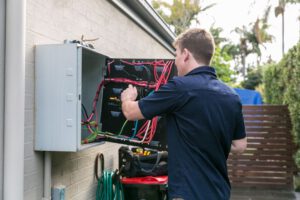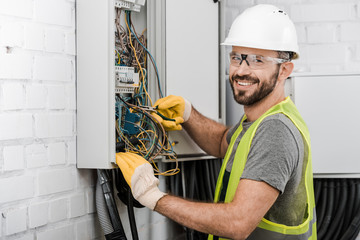Having Emergency Electrician CT come to your home is a necessity, especially if you live in a city where electricity is not widely available. But there are some things you should know before you hire one. These tips are designed to help you choose the right one for your home and keep you and your family safe.

Having flickering lights is an annoying and frustrating occurrence. They are also a serious risk to your home’s safety. This is because they could signal a larger problem that requires professional attention. Luckily, there are a few things you can do to fix your flickering lights.
The first thing to do is try to identify the cause of the flickering. It may be something as simple as a loose connection or a broken light bulb. If you can’t access the electrical panel safely, call your local emergency services.
Another common source of flickering lights is a high-capacity electrical system. Some appliances require more than their share of electricity, which causes the voltage in your house to drop.
If you suspect this is the case, you should call an electrician to assess the situation. A competent electrician can tell you what’s causing the flickering lights.
Another possible source of flickering lights is a tree limb resting on the power line. Tree limbs can break off and obstruct the power line, resulting in flickering lights.
Another cause of flickering lights is loose wiring. When wires become loose, they can lead to electrical friction, sparks, and a possible fire. If you find this is the cause of your flickering lights, you may need to repair or replace your wiring.
A good rule of thumb is to turn off your light before handling it. This is important because if you leave the light on, you can cause damage to your light bulb. You should also look for patterns of flickering lights because a pattern can help you determine the source of the problem.
There are a number of other causes of flickering lights, including a faulty lamp, a tree limb on the power line, a broken service cable, a loose meter box connection, and more.
Identifying the cause of electrical humming noises can be tricky. Luckily, an emergency electrician can quickly diagnose the problem and make any necessary repairs.
Humming noises are caused by alternating currents flowing through electrical elements. This type of current changes direction many times per second. Electrical elements hum for a variety of reasons, including damaged internal components.
Humming noises are also caused by improperly grounded wires, which can spark an electrical fire. If you hear unusual noises, you should unplug any electrical appliances and check for sources. If there is a sound, you should turn off any circuit breakers in the home to avoid damaging the system.
You can use a stethoscope to locate the source of the noise. You can purchase a stethoscope at your local drugstore or supermarket. This instrument allows you to listen to sounds through walls and other surfaces.
You can also use a condenser microphone to listen to electrical noises. This instrument can be fed into powerful headphones. These headphones will help you pinpoint the source of the noise.
A professional electrician can also diagnose the problem and make any necessary repairs. They can also disconnect other electrical items to check for overload. They will also tighten any screws in the fuse box to ensure proper safety.
If you are concerned about the safety of your family or home, you should shut off the circuit and call an electrician to inspect it. This will eliminate the source of the noise and avoid a fire.
Electrical humming noises are annoying and can cause alarms. You should never ignore them. The noise is a warning sign that something is wrong.
Usually, when a circuit breaker trips, it means that there is an electrical issue in your home. A common problem is overloading. This is when more devices are plugged in at once than the circuit can handle. The resulting heat is very dangerous.
Fortunately, there are some easy fixes. You can call your local electrician to come to your home, or you can fix it yourself. The following are some of the most common ways to fix a tripped breaker.
The first thing you need to do is turn off the devices you are not using. This will reduce the strain on the circuit. Then, turn on the devices you are using one by one. This will allow you to find out which device is causing the problem.


